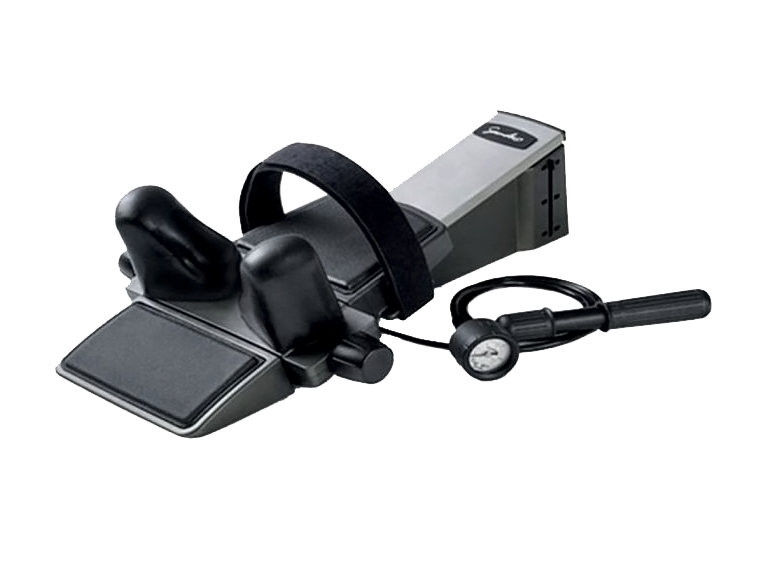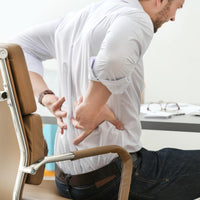
|
Definition: Rotator cuff surgery is a medical procedure to repair or treat tears in the rotator cuff—a group of muscles and tendons that stabilize and move the shoulder joint. This surgery can be performed using various techniques, including arthroscopic, mini-open, and open repair methods. Science: The rotator cuff comprises four muscles and their tendons, which keep the humerus (arm bone) centered in the shoulder socket. When these tendons tear due to injury, overuse, or degeneration, the shoulder joint loses stability, leading to pain, weakness, and limited mobility. Surgery is used to locate and repair the tear, often with arthroscopic techniques that require only small incisions and allow the surgeon to view the joint through a camera and video monitor. Examples in Action:
Fun Fact: Many people have asymptomatic rotator cuff tears. Studies indicate that rotator cuff tears are common even in those who experience no symptoms, underscoring the value of early diagnosis to prevent further damage.1 |
Key Takeaways
- Awareness of Rotator Cuff Functions: The rotator cuff is essential for shoulder stability and flexibility, making it crucial to understand its role in both injury prevention and treatment.
- Importance of Early Diagnosis: Recognizing symptoms of rotator cuff injuries early can lead to more effective treatment options, potentially avoiding surgery and improving recovery times.
- Non-Surgical Alternatives: Many rotator cuff issues can be effectively managed through non-surgical treatments like physical therapy, medication, and lifestyle modifications, offering patients a range of options before considering surgery.
The rotator cuff is a group of muscles and tendons that surround the shoulder joint, keeping the head of your upper arm bone firmly within the shallow socket of the shoulder. Essentially, it is the part of the shoulder that allows for a wide range of motion, contributing significantly to the shoulder's stability and flexibility.
The rotator cuff consists of four muscles: the supraspinatus, infraspinatus, teres minor, and subscapularis. These muscles originate from the shoulder blade and attach to the head of the humerus, forming a cuff around this joint. Each muscle plays a crucial role in shoulder movement and stability—the supraspinatus assists with raising the arm, the infraspinatus and teres minor aid in the rotation of the arm, and the subscapularis moves the arm by pulling it forward.
Rotator cuff surgery is a procedure aimed at repairing the torn tendons of the shoulder to restore strength, and function, and alleviate pain. The type of surgery performed depends on the severity of the injury, the patient's overall health, and the specific tendons affected. Rehabilitation plays a crucial role in recovery, helping patients gradually regain shoulder strength and flexibility.
Recognizing Symptoms: How To Identify A Rotator Cuff Injury
Rotator cuff injuries are common and can significantly impact daily life, limiting your ability to perform simple tasks or engage in activities you enjoy. Identifying the symptoms early on can lead to a more successful recovery process, especially when interventions such as rotator cuff surgery might be necessary. Here are key signs to watch out for:
Persistent Pain
One of the most evident indicators of a rotator cuff injury is persistent pain located in the shoulder area. This discomfort may worsen when you're resting or lying on the affected side, making it difficult to sleep or find a comfortable position at night.
Weakness In The Arm
If lifting objects overhead or performing tasks like reaching behind becomes increasingly challenging, it could signify a weakened state in your shoulder due to a rotator cuff injury. This weakness can significantly hinder your ability to carry out daily activities, affecting your overall quality of life.
Decreased Range of Motion
Another red flag is a notable decrease in your ability to move your arm in certain directions or complete a full range of motion without pain. If the injury is left untreated, this limitation can progressively worsen, potentially leading to a frozen shoulder.
Audible Noises Or Sensations
Hearing cracking or popping noises when moving your shoulder or experiencing a sensation that your shoulder could snap out of place indicates irregularities likely stemming from a rotator cuff issue. These signs should not be ignored, as they can point to tears in the rotator cuff tendons.
Swelling And Tenderness
Swelling, redness, or tenderness around the shoulder area, often accompanied by warmth, can signify inflammation related to a rotator cuff injury. While these symptoms might be less noticeable than pain or weakness, they are essential indicators of an underlying issue.
Understanding The Types Of Rotator Cuff Surgeries: Which Is Right For You?
Deciding to undergo rotator cuff surgery is a significant step towards regaining functionality and achieving pain relief for many individuals suffering from shoulder injuries. This decision, however, comes with the need to understand the types of rotator cuff surgeries available, as the appropriate choice varies depending on the severity of the injury, the patient’s lifestyle, and their recovery goals.
Arthroscopic Rotator Cuff Repair
Arthroscopic rotator cuff repair is a minimally invasive surgery that employs a small camera and instruments inserted through tiny incisions. This method is favored for its reduced recovery time and minimal scarring. It is typically suitable for patients with less severe tears or those whose lifestyle demands quicker recovery.
Open Rotator Cuff Repair
Open rotator cuff repair, while less commonly performed due to the advent of arthroscopic techniques, may be the preferred option for large or complex tears. This traditional method involves a larger incision, giving the surgeon a more direct view and access to the torn tendon. The recovery period is generally more extended than the arthroscopic approach, but it may offer the best chance for a successful outcome in complicated cases.
Mini-Open Repair
The mini-open repair technique combines elements of both arthroscopic and open surgery techniques. Initially, the surgeon repairs the rotator cuff using an arthroscope. Following this, a small incision is made to repair the muscles using traditional surgical methods. This approach allows for the benefits of arthroscopic surgery while enabling the surgeon to perform more complex repairs directly.
Choosing The Right Procedure
Determining the most suitable type of rotator cuff surgery requires a comprehensive evaluation by skilled orthopedic specialists. Factors such as the size of the tear, the patient's age, activity level, and overall health play critical roles in this decision-making process.
Post-Surgery Recovery: Tips For Healing And Rehabilitation After Rotator Cuff Surgery
Recovering from rotator cuff surgery is a journey that requires patience, adherence to a structured rehabilitation plan, and the right support system. The pathway to full recovery involves several stages, from initial rest and immobilization to gradually increasing activities. Here are some supportive tips to encourage healing and facilitate a smoother rehabilitation process:
Follow Your Doctor’s Guidance
After rotator cuff surgery, following your surgeon’s post-operative instructions is crucial. This includes guidance on when and how to start moving your shoulder again. Your surgeon and physical therapist will create a customized rehabilitation plan tailored to your needs and recovery goals. This plan is designed to regain shoulder strength and flexibility safely without risking damage to the repair.
Prioritize Pain Management And Inflammation Reduction
Managing pain and reducing inflammation are key components of the recovery process. For effective pain relief and inflammation control, consider integrating cold therapy into your recovery regimen. Cold therapy can help minimize swelling and pain, making it a valuable addition to your rehabilitation toolkit.
Quality cold therapy systems from trusted brands such as AirCast and DonJoy, available from leading suppliers like us, are specifically designed to provide targeted cold therapy, enhancing comfort and relief during your recovery journey.
Incorporate Gradual Physical Therapy
Physical therapy is an essential element of the healing process, helping to restore strength and increase the range of motion in your shoulder. Begin with gentle stretches and exercises as recommended by your physical therapist. Over time, as your recovery progresses, you will gradually move on to more strenuous exercises. Remember, attempting to rush this process can lead to setbacks, so it's important to stay within the guidelines provided by your healthcare team.
Maintain Regular Follow-Up Appointments
Regular check-ups with your surgeon and physical therapist are vital to monitor your healing progress and make any necessary adjustments to your rehabilitation plan. These appointments are opportunities to address any concerns or questions and ensure your recovery is proceeding as expected.
Potential Risks And Complications Of Rotator Cuff Surgery: What You Should Know
Like all surgical procedures, rotator cuff surgery carries inherent risks and potential complications. Patients should be informed about these issues as they prepare for surgery and plan for a smooth recovery. Understanding these risks can also help individuals develop realistic expectations and make informed decisions concerning their health care.
Common Risks Associated With Rotator Cuff Surgery
- Infection: Though rare, there is always a risk of infection with any surgical procedure. Infections can occur at the site of the incision or internally within the shoulder joint. Symptoms may include increased redness, swelling, pain, or discharge at the surgery site. Prompt treatment with antibiotics is essential to manage this complication.
- Bleeding: Some blood loss during or after surgery is average, but excessive bleeding can lead to complications requiring additional intervention.
- Anesthetic Complications: Reactions to anesthesia can occur and may include respiratory issues, allergic reactions, or complications from underlying medical conditions that anesthesia may exacerbate.
Specific Complications Related To Rotator Cuff Surgery
- Re-Tear of the Rotator Cuff: One of the most significant risks following rotator cuff repair is the potential for re-tearing of the tendon. The likelihood of this occurring can depend on several factors, including the size of the initial tear, the quality of the tendon tissue, and the patient's adherence to post-operative rehabilitation guidelines.
- Stiffness and Reduced Mobility: Some patients may experience stiffness, reduced mobility, or a loss of range of motion following surgery. While physical therapy can often alleviate these symptoms, in some cases, they may persist and impact the overall outcome of the surgery.
- Nerve Damage: Though infrequent, nerve damage can occur during rotator cuff surgery, potentially leading to weakness, numbness, or changes in sensation in the affected arm.
Navigating Recovery: Mitigating Risks With Professional And Supportive Care
Mitigating these risks begins with choosing an experienced orthopedic surgeon and adhering to a comprehensive post-operative care plan. It is paramount to follow all rehabilitation instructions provided by healthcare professionals. This includes physical therapy, managing pain and inflammation, and gradually increasing activity levels under proper guidance.
Final Thoughts
Understanding rotator cuff surgery is crucial for anyone suffering from shoulder pain or injuries. This procedure can restore functionality and alleviate discomfort when conservative treatments fail. However, knowing the causes of injuries, recognizing symptoms early, and exploring non-surgical options can significantly impact recovery outcomes. Whether through surgical intervention or rehabilitation, taking informed steps toward shoulder health is key to maintaining an active and fulfilling life.
Are you experiencing shoulder pain or recovering from a rotator cuff injury? OrthoBracing offers a comprehensive range of top-quality shoulder braces and cold therapy machines designed to accelerate your recovery and improve your overall shoulder health. Our shoulder braces provide support and stability, reducing pain and promoting healing. Our cold therapy machines offer targeted cold therapy to reduce inflammation, pain, and swelling, optimizing your recovery process.
Invest in your well-being and choose OrthoBracing. Explore our collection today and experience the difference.
Read also:
- How To Use An Ice Machine For Shoulder Surgery
- Top Shoulder Rehab Exercises For Faster Recover
- Shoulder Immobilizer vs Sling: What’s the Difference and Which is Right For You?
Frequently Asked Questions About What Is A Rotator Cuff Surgery?
What is the success rate of rotator cuff surgery?
Success largely depends on the tear size, the patient’s age, and the quality of the post-surgery rehabilitation process. Ensuring that you're under the care of skilled orthopedic professionals and adhering to prescribed rehabilitation protocols significantly contributes to the success of the surgery.
How long is the recovery period for rotator cuff surgery?
Recovery periods can vary greatly depending on the severity of the rotator cuff injury and the specific type of surgery performed. Generally, a conservative timeline ranges from four to six months, with some patients requiring up to a year for full recovery. During this period, it is crucial to follow all guidelines your healthcare provider provides for the best results.
Can I avoid surgery for a rotator cuff injury?
In some cases, non-surgical treatments such as physical therapy, rest, ice, and non-steroidal anti-inflammatory drugs (NSAIDs) can be effective in managing the symptoms of a rotator cuff injury. Your orthopedic specialist will consider the severity of your injury, your level of pain and disability, and your overall health before recommending the best treatment plan for you.
Will I need physical therapy after rotator cuff surgery?
Yes, physical therapy is a crucial component of the recovery process after rotator cuff surgery. A specifically tailored physical therapy program helps restore strength and flexibility to your shoulder. Engaging in prescribed physical therapy sessions and exercises will significantly impact your recovery timeline and the overall success of the surgery.
How long do I have to wear a sling after rotator cuff surgery?
The duration of a sling's use post-surgery varies, but it is generally recommended for four to six weeks. This timeframe allows the rotator cuff tendons to heal properly. During follow-up visits, your surgeon will provide specific instructions based on your surgery's extent and progress.
Can a rotator cuff tear heal on its own without surgery?
Small and partial-thickness tears can sometimes heal independently with proper rest, physical therapy, and other non-surgical methods. However, complete tears often require surgery to reattach the torn tendon to the bone. Non-surgical treatment options can alleviate symptoms and improve function but might not fully restore the tendon's integrity. Always consult an orthopedic specialist to understand the best course of action for your condition.
Sources:
- Mathiasen, R., & Hogrefe, C. (2018). Evaluation and Management of Rotator Cuff Tears: a Primary Care Perspective. Current Reviews in Musculoskeletal Medicine, 11(1), 72–76. https://doi.org/10.1007/s12178-018-9471-6
























